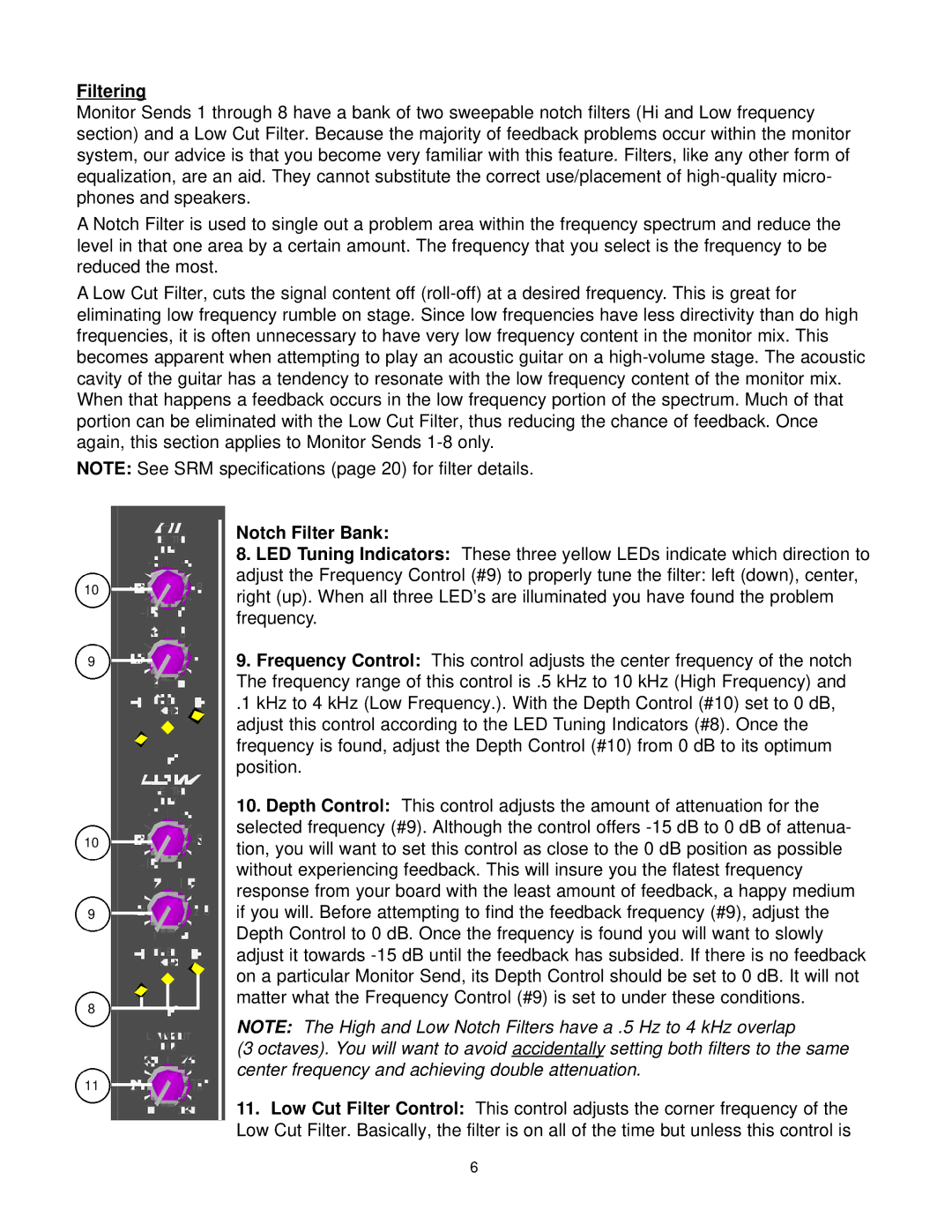
Filtering
Monitor Sends 1 through 8 have a bank of two sweepable notch filters (Hi and Low frequency section) and a Low Cut Filter. Because the majority of feedback problems occur within the monitor system, our advice is that you become very familiar with this feature. Filters, like any other form of equalization, are an aid. They cannot substitute the correct use/placement of
A Notch Filter is used to single out a problem area within the frequency spectrum and reduce the level in that one area by a certain amount. The frequency that you select is the frequency to be reduced the most.
A Low Cut Filter, cuts the signal content off
NOTE: See SRM specifications (page 20) for filter details.
10
9
10
9
8
11
Notch Filter Bank:
8.LED Tuning Indicators: These three yellow LEDs indicate which direction to adjust the Frequency Control (#9) to properly tune the filter: left (down), center, right (up). When all three LED’s are illuminated you have found the problem frequency.
9.Frequency Control: This control adjusts the center frequency of the notch The frequency range of this control is .5 kHz to 10 kHz (High Frequency) and
.1 kHz to 4 kHz (Low Frequency.). With the Depth Control (#10) set to 0 dB, adjust this control according to the LED Tuning Indicators (#8). Once the frequency is found, adjust the Depth Control (#10) from 0 dB to its optimum position.
10.Depth Control: This control adjusts the amount of attenuation for the selected frequency (#9). Although the control offers
NOTE: The High and Low Notch Filters have a .5 Hz to 4 kHz overlap
(3 octaves). You will want to avoid accidentally setting both filters to the same center frequency and achieving double attenuation.
11.Low Cut Filter Control: This control adjusts the corner frequency of the Low Cut Filter. Basically, the filter is on all of the time but unless this control is
6
